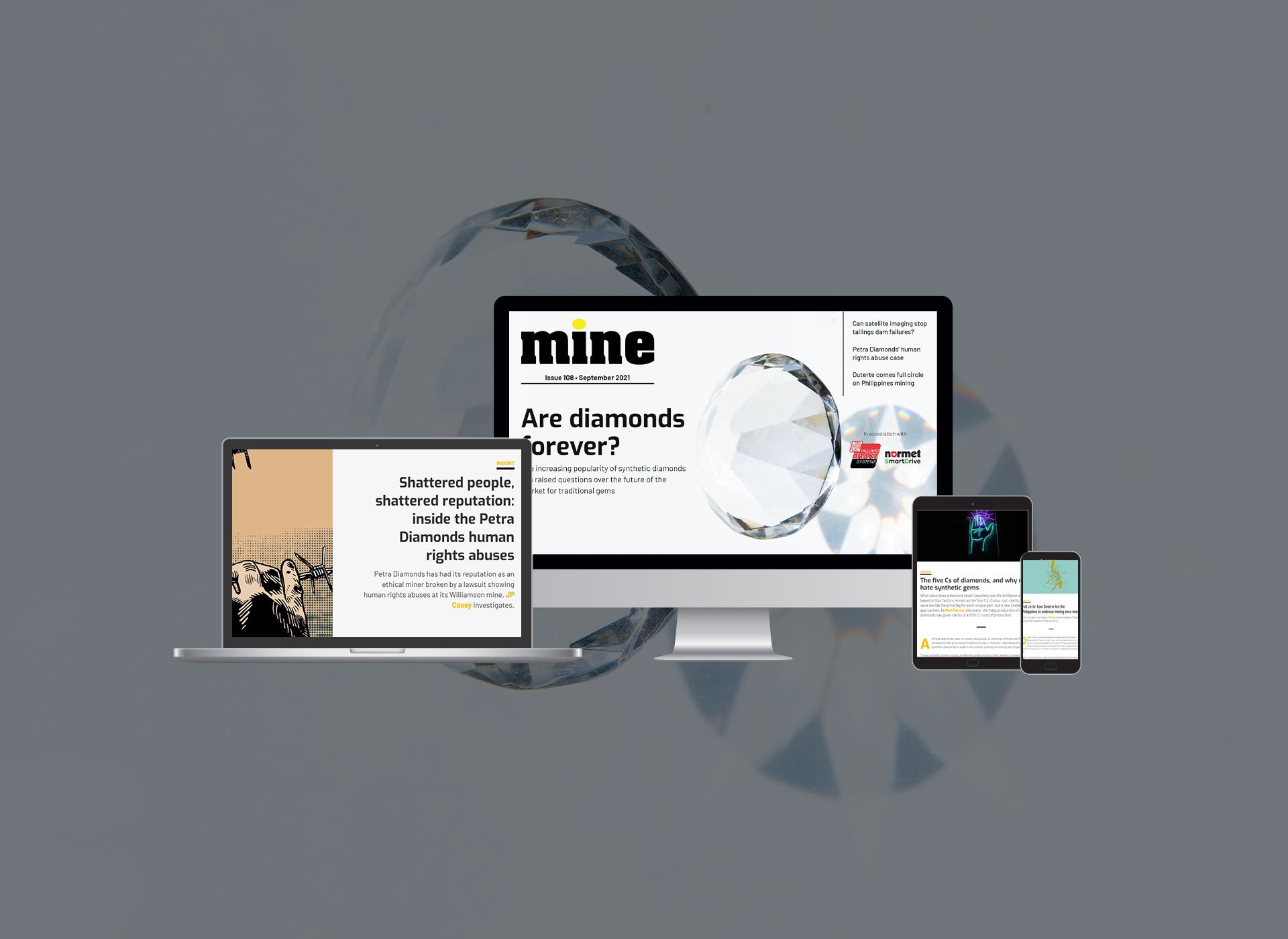
Research from the University of Nottingham and Terra Motion showed that the Brumadinho dam collapse could have been predicted based on ground movements in the weeks prior to the disaster. Now, that research will have real-world application with Geospatial Insight launching a service to monitor ground movements in and around tailings dams to provide early warnings of potential structural failures. We find out more about the work and how it could improve mine safety.
Petra Diamonds has had its reputation as an ethical miner shattered by a recent lawsuit alleging violence and human rights abuses at its Williamson mine in Tanzania by a security firm contracted to protect the area. The miner accepted responsibility and paid out over £4m in damages. It’s a small victory for those affected by the abuses, but one that will do nothing to repair Petra’s reputation or address the root causes of this power dynamic, where a distant owner or operator is reliant on the good word of a local contractor to manage day-to-day operations at a mine. Does this lawsuit prove that, even with the best will in the world, ethical mining is all but impossible on a global scale?
Elsewhere, jewellery maker Pandora recently announced it would only use synthetic diamonds for its jewellery. DeBeers, the world’s largest diamond producer, has already said it will not affect its bottom line. But with synthetic diamond production set to suddenly gain significant R&D funds, can they threaten mining? Decades after the diamond industry was transformed by the most successful advertising campaign in history, will DeBeers start to lose its grip, or will its diamond hands hold on to a changed market?
Whether you are on a desktop, tablet or smartphone, you can read the magazine for free online, and join the conversation on Twitter.

In this issue
Eyes in the sky: can satellite radar imaging help stop tailings dam failures?
Research by the University of Nottingham and Terra Motion using advanced satellite radar imaging concludes that the 2019 Brumadinho dam disaster could have been predicted. Julian Turner talks to Geospatial Insight, the company behind a new solution based on the research.

Conflict over the UK’s deep sea mining licences
Deep sea mining exploration licences granted by the UK Government to Lockheed Martin subsidiary UK Seabed Resources have sparked outcry from environmental organisations. In analysis from these groups, the licences were snubbed as ‘riddled with inaccuracies’, outdated, and unlawful. Scarlett Evans digs deeper to find out the story behind deep sea mining.

Shattered people, shattered reputation: inside the Petra Diamonds human rights abuses
Petra Diamonds has had its reputation as an ethical miner broken by a lawsuit showing human rights abuses at its Williamson mine. JP Casey investigates.

Full circle: how Duterte led the Philippines to embrace mining once more
From mining bans to new licences, JP Casey reviews the impacts of President Rodrigo Duterte’s policies on Philippines mining.

The five Cs of diamonds, and why miners hate synthetic gems
What value does a diamond have? Jewellers rate the brilliance of a diamond based on four factors, known as the ‘four Cs’. Colour, cut, clarity, and carat value decide the price tag for each unique gem, but a new challenger approaches. As Matt Farmer discovers, the mass production of synthetic diamonds has given clarity to a fifth ‘C’: cost of production.

Critical lack of critical minerals
According to an IEA report, supplies of critical minerals will need to pick up sharply over the coming decades as they are crucial components for the manufacturing of renewable energy technologies. Yoana Cholteeva looks into the specifics of this vicious circle and the measures that can be taken to rectify it.

Preview – MINE Magazine October 2021
From robotics and drones to the internet of things and advanced sensor technology, the mining industry is becoming increasingly digital and increasingly connected. However, it is also a sector that faces far greater physical obstacles to progress than many others.
In the next issue, as industries go increasingly digital, we examine the unique opportunities and challenges faced within the mining sector.



